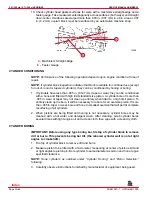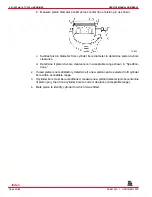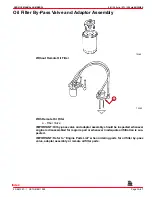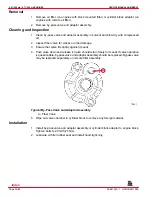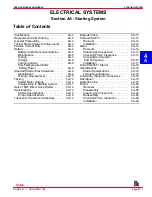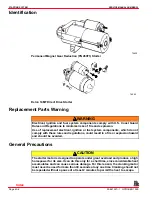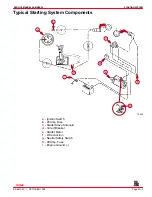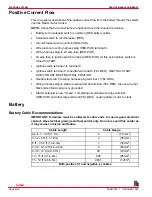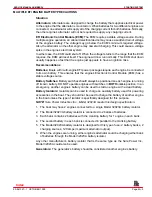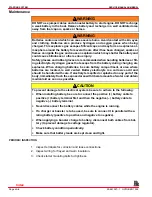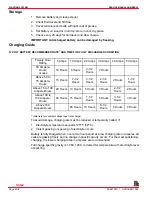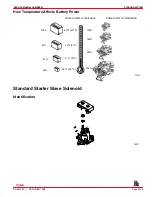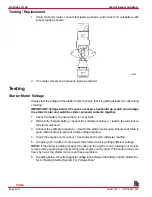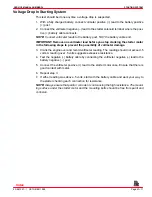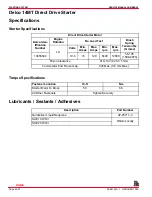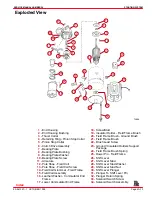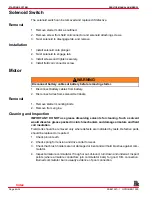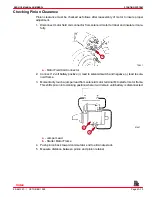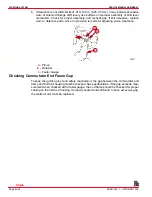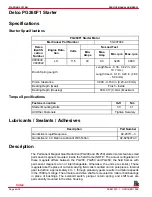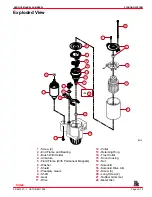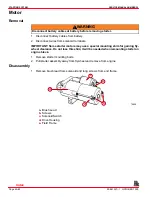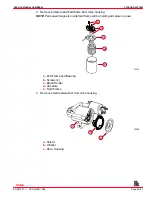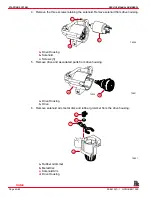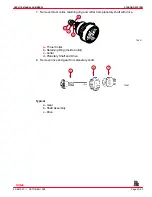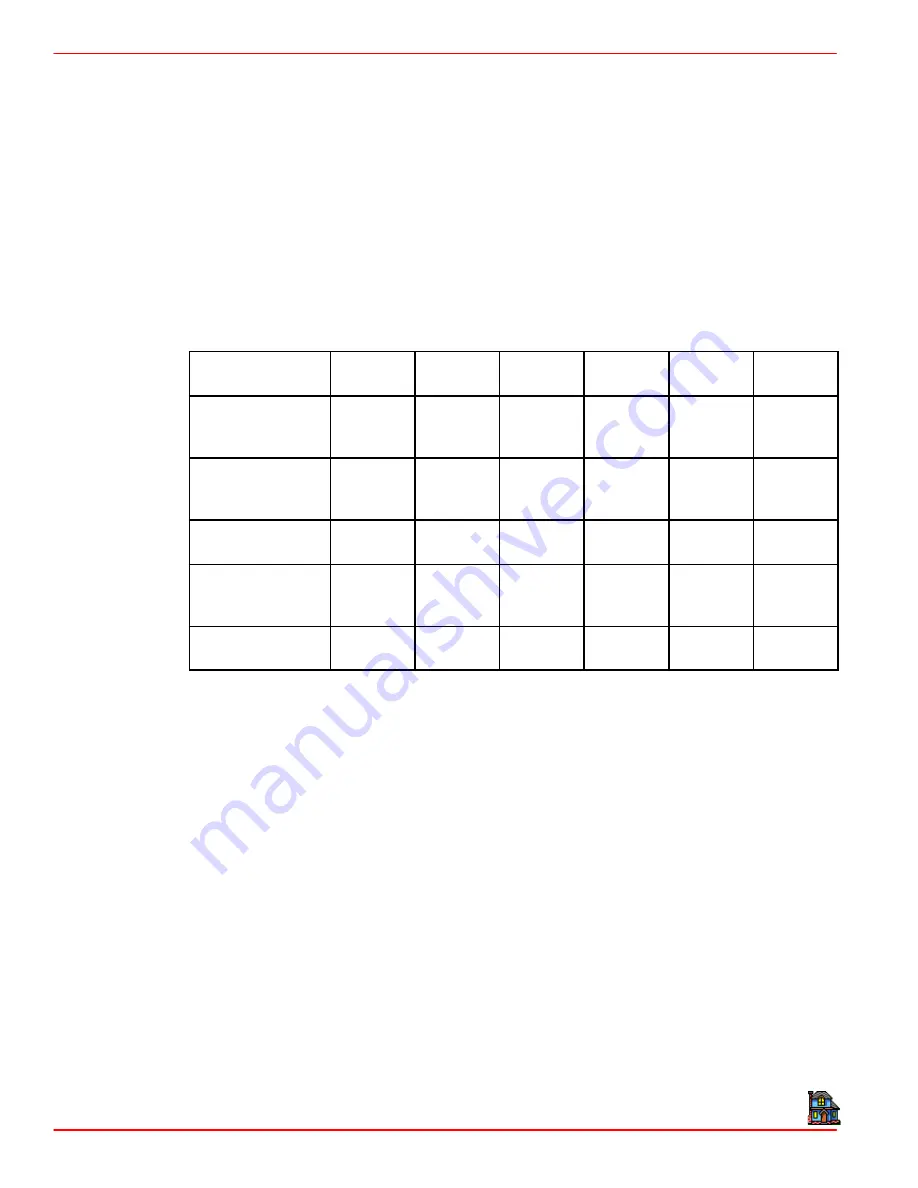
STARTING SYSTEM
SERVICE MANUAL NUMBER 24
Page 4A-8
90-861327--1 OCTOBER 1999
Storage
1. Remove battery and clean exterior.
2. Check fluid level and fill if low.
3. Cover terminals and bolts with light coat of grease.
4. Set battery on wood or in carton; store in cool, dry place.
5. Check every 20 days for fluid level and slow charge.
IMPORTANT: A discharged battery can be damaged by freezing.
Charging Guide
12 VOLT BATTERY RECOMMENDED RATE
1
AND TIME FOR FULLY DISCHARGED CONDITION
Twenty Hour
Rating
5 Amps
10 Amps
20 Amps
30 Amps
40 Amps
50 Amps
50 Ampere-
Hours
or less
10 Hours
5 Hours
2-1/2
Hours
2 Hours
Above 50 to
75 Ampere-
Hours
15 Hours
7-1/2
Hours
3-1/2
Hours
2-1/2
Hours
2 Hours
1-1/2
Hours
Above 75 to 100
Ampere-Hours
20 Hours
10 Hours
5 Hours
3 Hours
2-1/2
Hours
2 Hours
Above 100 to
150 Ampere-
Hours
30 Hours
15 Hours
7-1/2
Hours
5 Hours
3-1/2
Hours
3 Hours
Above 150
Ampere-Hours
20 Hours
10 Hours
6-1/2
Hours
5 Hours
4 Hours
1
Initial rate for constant voltage taper rate charger.
To avoid damage, charging rate must be reduced or temporarily halted, if:
1. Electrolyte temperature exceeds 125
°
F (52
°
C).
2. Violent gassing or spewing of electrolyte occurs.
Battery is fully charged when, over a two hour period at a low charging rate in amperes, all
cells are gassing freely and no change in specific gravity occurs. For the most satisfactory
charging, the lower charging rates in amperes are recommended.
Full charge specific gravity is 1.260-1.280, corrected for temperature with electrolyte level
at split ring.
Index


